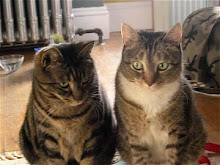
People have been drawing on walls, bodies, objects, and other surfaces since the beginning of time and since we could figure out how to scratch and mark something.
The history of illustration is inherently linked to all other histories. This may seem obvious, but that is the point.
One can find certain obsessions or foci, which translate into currents and trends in illustration. For example, the obsessive cross-hatching technique, which so many artists and print makers developed and used centuries ago still functions as a strategy to reflect movement, density, texture, shadow, and other illusion. This meditative and sometimes frenetic mark-making speaks about fixation, the need to look, to stare (see James Elkin's book the Object Stares Back or read Susan Sontag On Photography, John Berger's Ways of Seeing, and Roland Barthes Camera Lucida to read more about looking and seeing, making meaning, and visual language). I recently came across some of Michelangelo's drawings and recognize contemporary artist's use of these kinds of marks, the needs to zero on on draping, the use of curves to suggest folds. This makes me think of R and Charles Crumb's early comics and then the obsessive writings of Deleuze and Guattari on folds and borderspaces in the extensive book, A Thousand Plateaus.
Surely cartooning is more than short-hand or code, it is also a process of drawing and working things out, and that incorporates the satisfaction or compulsion to make marks, link them, and create pages of them.
From Guston to Herriman, Peter Bruegel the Elder (inspired by my favorite Bosch) to Max Ernst, The Greeks to Keith Haring, it seems every time period has its mark makers who tell stories through their scratchings and ask the world to look at them, and at themselves.In Max Ernst's graphic novel, Une Semaine de Bonte, he collages images found from old books and catalogues. The images are completely made of lines, whose vertical, horizontal, and diagonal directions clash and butt up against one another creating tensions, lights and darks, variations in texture and form. These strategies and the language of collage, cut and paste, further emphasize his queer pairings of animals and humans, natural elements with architectural spaces. The juxtaposition becomes form, content, and context. In true Surrealist fashion,nonsense become meaningful, and sequence and narrative are turned upside down and redefined.
Illustrators, comic book artists, zinists, and others have used the conventions of art against themselves to find new value in their work, and process raw material. Artists must be in a constant state of flux and change which is more true to the daily ebb and flow, flotsam and jetsam one encounters in daily life. It is those conflicts and tensions that interest artists, and cause them to locate methods and materials that match more acutely those sentiments and experiences.

No comments:
Post a Comment